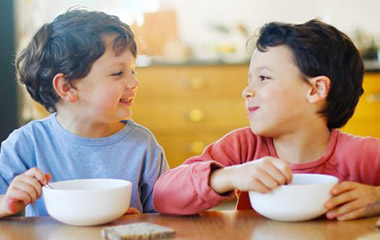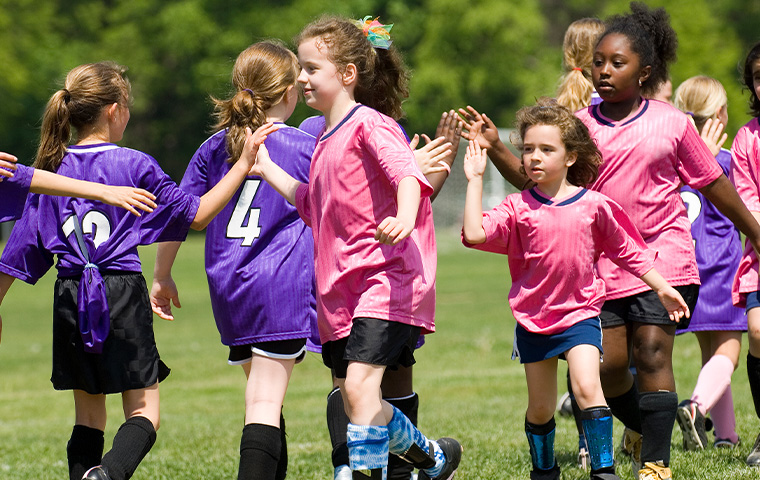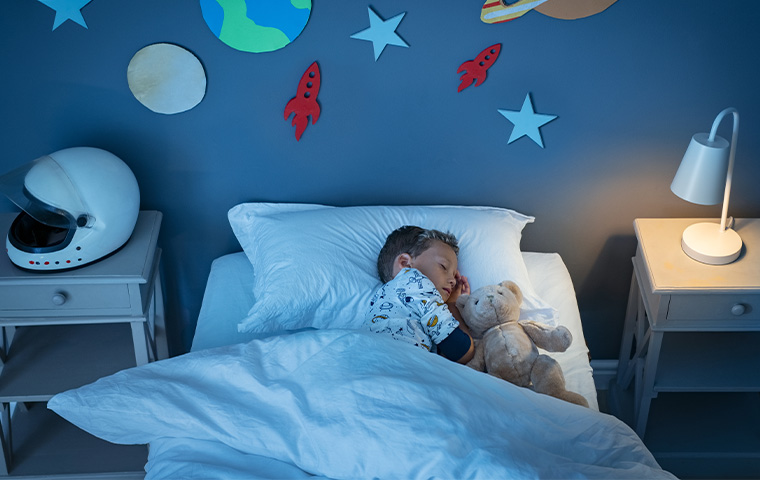The Role of Play in Pediatric Development
As an adult, you might think of play as a reward for the actual “work” you do all day - a nice treat at the end of a long day or week. But for children, play is their work because it's necessary for pediatric development. Play helps children learn, grow, and develop the skills they will use for the rest of their lives.
No Special Toys or Programs Required
As a parent, you are probably bombarded with advertising messages encouraging you to buy this toy or that toy or to sign your kids up for special classes to help them perform well academically. But, in reality, your child can learn everything she (or he) needs to know and may actually be better prepared to learn in school if she can play to her heart's content when she is little.
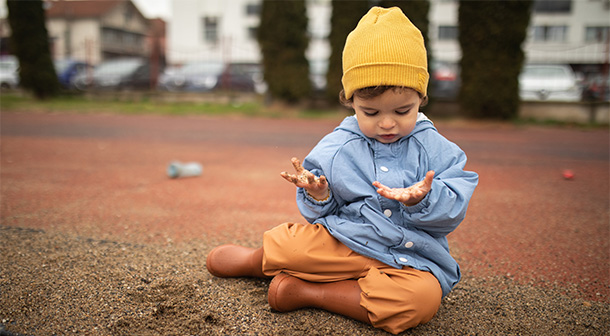
Learning Through Play: How Play Impacts Pediatric Development
- Play helps children engage their imagination, think creatively, solve problems, and develop physically and emotionally.
- Play allows children to explore and make sense of their world.
- Play enables children to take risks in a low-stakes, safe environment, which helps them overcome their fears and anxieties.
- Play helps children practice and eventually master new skills, which builds confidence and resilience.
- Play creates a positive connection with learning and exploring new ideas.
- Play provides young children, who don't have an extensive vocabulary, a way of communicating their feelings in a nonverbal way.
- Play develops social-emotional skills required for later success in school.
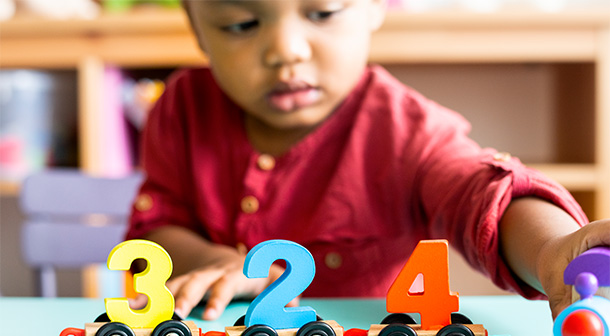
Unstructured Ways to Play
There's no “right” way to play. Your child's imagination will be her guide. Start by providing some materials and let her determine how she wants to play with them.
Here are some ideas for unstructured play that your child can do alone, with a friend or sibling, or with you.
Dress-up
Make a dress-up box with old costumes, scarves, and hats. Sheets or towels can also make great capes. Being creative together and finding things around the house, or in your closet, can become a part of her dress-up play.
Grocery store
Save those empty food boxes from your pantry for playing grocery store. Adding a calculator and play money will make this a fun way for your child to learn important math concepts, too.
Crafts
Provide coloring books, paper, crayons, child-safe scissors, glue sticks, and tape for crafting. Paper towel and toilet paper tubes are other great items to keep in your craft stash! Your child may want to use the tubes as telescopes, for listening, as a microphone, or for decorating. She will come up with her own great ideas!
Musical instruments
Give your child wooden spoons and pots and pans to use as drums. Use empty containers filled with beans as shakers.
Play dough
Make your own play dough with simple ingredients or buy Play-Doh at the store. Either way, play dough is a great activity for inspiring your child to be creative. And, it helps build hand strength, which is needed for fine motor skills such as writing.
How to make homemade play dough
Make “oobleck” by mixing cornstarch and water. The name oobleck comes from a Dr. Seuss book called Bartholomew and the Oobleck, which would also be a fun book to read with your child during story time!
Mix 2 cups of cornstarch to 1 cup of water into a bowl. Mix the cornstarch and water until your oobleck is formed. You can also color your oobleck by adding food coloring to the water and then mix with the cornstarch.
Sensory bins
Sensory bins are simply plastic storage bins filled with a “base.” The base can be a variety of things such as rice, dried beans, and/or felt pom poms. Once you have a base, you can add different “tools.” Add funnels, jars, measuring cups, tongs, and little toys such as cars or diggers. Encourage your child to explore the materials and use them however she likes but be sure to supervise her during the process. The scooping, pouring, measuring, and using tongs to pick things up are all excellent activities for developing fine motor skills and will help your child get hands-on experience with scientific concepts such as volume and mass.
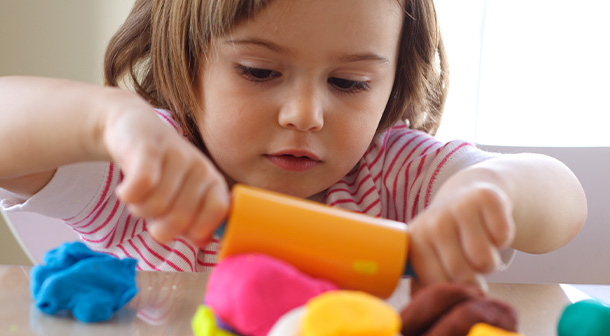
Children's Games
The following children's games are great games for kindergarteners and preschoolers. You can play these anywhere, anytime.
Simon Says
This game can be played with two or more people. Whoever is “Simon” gives directions to the other players. When the direction starts with “Simon says,” such as, “Simon says touch your toes,” all the players must follow Simon's directions. However, if Simon doesn't say “Simon says” before the activity, then anyone who does the activity anyway is out. To help the game keep moving, Simon can call out directions faster and faster to eliminate players.
How this children's game helps pediatric development
Simon Says helps young children work on motor development, body awareness, following and giving directions, sequencing skills, and sportsmanship. Choosing whether they should follow the direction helps children work on being able to make decisions and then apply what they need to do.
Hot and Cold
This children's game is sure to become a favorite! Hide an object like a favorite toy or stuffed animal. When your child gets closer to it, tell her she's getting hotter, and when she gets further away tell her she's getting colder. It's their job to explore and find the object based on your hints.
How this children's game helps pediatric development
Hot and Cold teaches your child how to follow directions, how to apply an abstract concept such as a temperature scale (Where am I on the scale of hot to cold?), and how to test solutions and solve a problem (Is it under the couch? Let's see!). When it's your turn to find the hidden item, your child gets to listen to your problem-solving process (Hmm. Where should I look first?). Hearing you narrate as your child keeps looking is also an excellent way for her to learn language skills.
Hokey Pokey
Remember this fun children's game? You sing the Hokey Pokey song, changing out the body part each time:
You put your left hand in
You take your left hand out
You put your left hand in
And you shake it all about
You do the hokey-pokey and you turn yourself around
That's what it's all about
How this children's game helps pediatric development
Hokey Pokey teaches kids how to follow instructions and helps develop muscle control and coordination. It also helps them identify body parts.
Scavenger Hunt
Give your child a list of things to hunt for, such as something blue, something square, a pencil, and a pillow.
How this children's game helps pediatric development
Scavenger hunts exercise your child's body and help her with problem-solving skills. If several kids are working together to find the items, they are learning teamwork. Learning to work in a team is a skill they'll use for the rest of their lives
Odd One Out
To play this children's game, you'll provide a collection of items that are alike plus one item that's different. Ask your child to pick the one that doesn't match. You could use blocks, veggies, fruits, stuffed animals, or whatever you have on hand.
How this children's game helps pediatric development
Playing Odd One Out encourages children to think critically. They are applying what they know and recognizing patterns. This could be a great game for kindergarteners who are working on learning colors and letter sounds. You could ask questions such as, “Which of these items doesn't start with a “B?” or “Which one of these items is red?” You can adapt the game to your child's ability or what they are learning at that time.
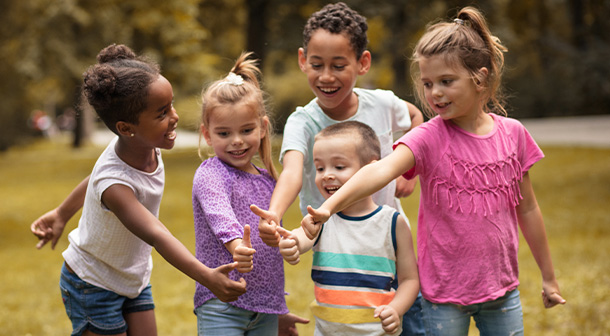
More Ways to Play
Puzzles
Age-appropriate puzzles are a great activity for you and your child to do together. It may take some trial and error to figure out the right level of puzzle for your child. The key is to make sure your child is challenged but not frustrated. Puzzles help with pediatric development by helping children learn fine motor skills, problem-solving skills, and patience. Seeing their completed puzzle also gives them a sense of accomplishment and can boost their confidence.
Story Time Can Be Play Time
Reading to your child is a great way to give her one-on-one attention. And she'll be learning so much in the process! Plan your daily schedule to include a regular story time. You can do story time in the morning, before a nap, at bedtime, or all three! Kids with siblings deserve and need one-on-one time, too!
Story time tips
- Let your child choose the books you read.
- Read slowly and expressively. Have fun using silly voices for the characters.
- Let your child play with books. Choose durable ones like board or cloth books.
- Do finger plays, like the “Itsy Bitsy Spider”.
- Read rhythmic, sing-song books and encourage your child to clap or move her body to the sounds.
- Build your child's vocabulary by using the illustrations to identify and name things.
- Ask open-ended questions like, “What do you think will happen next?" or “How did that story make you feel?”
Enjoy Story Time at the Library
Make reading fun and engaging by taking your child to the library and letting her choose which books she'd like to read. Many libraries will have scheduled story times and fun activities to do with kids - great opportunities for you to play together and explore the kids' section. Your child will associate books and going to the library with the fun experience of exploring and cozying up with you to read.
How story time helps your child's pediatric development
Story time develops children's literacy skills by:
- Expanding your child's vocabulary and helping her learn how to use new words.
- Helping your child understand that words are made up of smaller sounds.
- Helping your younger child to discover that marks on a page represent letters and words.
- Developing your child's knowledge of the alphabet.
Story time also helps with social-emotional learning by helping children to process emotions and feelings in a safe way. Stories give children (and adults) the ability to learn from and talk about all sorts of emotions and experiences in a safe space. Working through what happens to a fictional character can help children draw connections to their own experiences and learn how to process their feelings.
Need parenting help now?
The Texas Parent Helpline is available 24/7.
- Call 833-680-0611
- Chat with us
- Text 833-680-0611
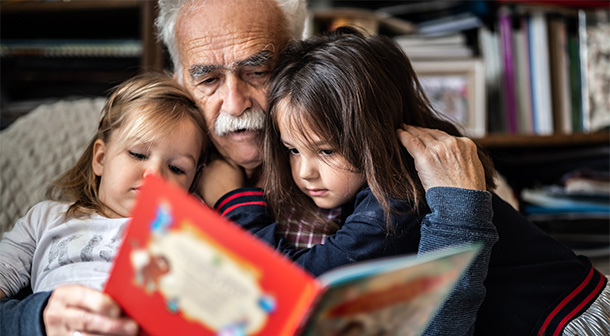
Physical Activity as Play
Physical activity is important! For optimal pediatric development, the National Association for Sports and Physical Education (NASPE) recommends an hour of structured (adult-led) physical activity and an hour of active free play.
Physical play ideas
Here are some ideas for playful ways to support your child's physical pediatric development:
- Set up an obstacle course with couch cushions in the living room or outside with whatever you can find. Use things like big cardboard boxes, hula hoops, a jump rope, or sidewalk chalk. Get creative!
- Kick a ball back and forth.
- Go for a walk and play “I Spy,” where one person guesses what the other person says they see; for example, “I spy with my little eye something red.” Take turns spotting items and guessing what they are.
- Go to a playground.
- Play hopscotch.
- Throw balled up socks into a laundry basket.
- Find a safe place for your child to ride a tricycle or bike.
- Tape lines to the floor or draw a line outside with sidewalk chalk and have your child use it as a balance beam.
- Put on some music and play “freeze dance” - dance when the music plays and freeze when it stops. This is a great activity that older siblings will enjoy playing too!
How physical play supports pediatric development
Physical play helps children develop coordination, body awareness, large motor skills, balance, and a better ability to focus on tasks and remember concepts. Studies show that physical activity improves kids’ memory, attention, and concentration.
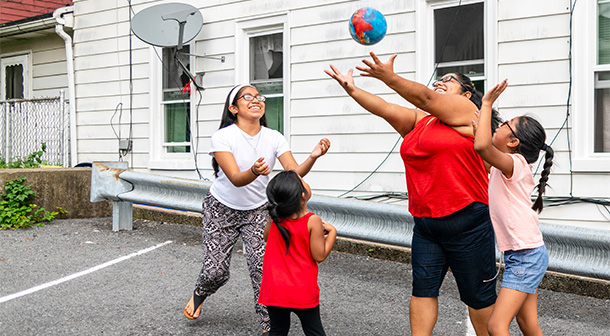
Making Time for Play
Life is busy, and sometimes it's easy to let play time fall to the bottom of your to-do list. Remember - play is not just fun and games, it's important for pediatric development and helps build strong parent/child relationships. Playing with your child shows that you are fully present and paying attention to her. Also, helping your child to play with other children teaches her important social, emotional, and teamwork skills.
Ideas for fitting in more play time
- Take short breaks from your work or chores to give your child your undivided attention. You don't always have to find a big chunk of time - break it up!
- Schedule playdates for your child so she can benefit from being with friends.
- Build play into your routine:
- Do a quiet activity like a puzzle together when your child wakes up in the morning or before bed to wind down.
- Make play part of your kitchen tasks. Give your child her own set of toy dishes and play food so she can “cook” while you are making dinner. Give her a child-sized broom, dustpan, rag, and spray bottle filled with water so she can clean right alongside you.
- Give your child some simple tools for digging and scooping dirt so she can play while you do yard work.
- Turn bath time into story time by providing waterproof books to read.
- Make story time part of your bedtime and naptime routine.

Play Time Can Be a Fun Time for All
It's your child's job to play and explore the world around her. As a parent, you can foster a lifelong love of learning by finding ways to play that help your child learn and develop. And you both can have fun doing it!


